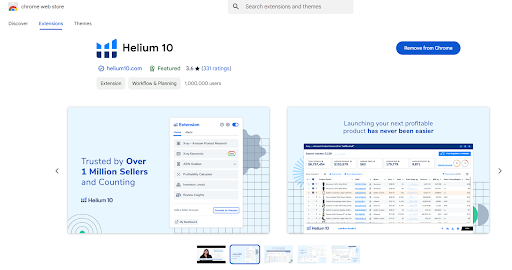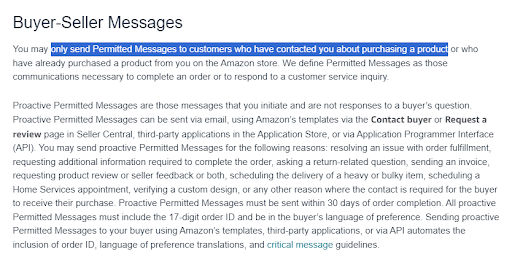Competitor Review Velocity on Amazon
In the Amazon marketplace, success requires far more than just excellent products and optimized listings. Savvy sellers recognize that deep dives into analytics can uncover opportunities to outpace the competition. One such critical metric is competitor review velocity.
Knowing how fast your competitors are gaining or losing reviews provides valuable insights into their tactics, market trends, and potential vulnerabilities. In this article, we'll explore advanced tips and observations on competitor review velocity, using expert opinions and real-world examples to help refine your Amazon strategy.
Understanding Review Velocity and Its Significance
What Is Review Velocity?
Review velocity refers to the rate at which a product accumulates new reviews over a specific time frame, usually measured over 30 days. As a measure of customer engagement, review velocity indicates how effective a seller's marketing strategies are and reflects customer satisfaction levels.
Why Review Velocity Matters
-
Market Trend Identification: A sudden rise in a competitor's review velocity may represent a successful marketing campaign and increased demand.
-
Amazon Algorithm Influence: Regular and organic reviews boost a product's ranking, as Amazon's A9 algorithm considers customer feedback in its ranking factors.
-
Detection of Unusual Activities: Sudden drops or spikes in review counts can indicate review manipulation or Amazon's enforcement actions against a listing.
Monitoring review velocity helps you detect competitors' moves, allowing you to adjust your tactics accordingly.
Utilizing Advanced Tools for Review Velocity Analysis
Leveraging Helium 10's Xray Extension

Helium 10's Xray Chrome extension is a powerful tool that provides deep analytics directly within the Amazon interface.
How to Use Xray for Review Velocity:
-
Installation and Activation: Ensure the Helium 10 Chrome extension is installed and you're logged in.
-
Product Search: Navigate to Amazon and search using a keyword related to your niche (e.g., "collagen peptides").
-
Launch Xray: Click on the Helium 10 icon and open Xray to analyze the search results.
-
Analyze the Results: In the Xray dashboard, locate the "Review Velocity" column, which shows how many new reviews each listing has gained or lost over the last 30 days.
Interpreting Review Velocity Data
-
Positive Review Velocity: Indicates growth in customer engagement and potentially increasing sales volume.
-
Negative Review Velocity: May signal issues like Amazon removing suspicious reviews or a decline in customer satisfaction.
Case Study:
A bestselling collagen peptides product experienced a review velocity of -5,664, signifying a huge loss of reviews. By analyzing its review history with Xray:
-
Historical Drops: The product had previous instances where reviews were removed and later reinstated.
-
Rating Impact: Such a large drop in reviews can affect the average star rating, impacting conversion rates.
Advanced Tip: Regularly track competitors' review histories to detect patterns of manipulated reviews or Amazon policy actions.
Strategies for Analyzing and Responding to Competitor Review Velocity
Identifying Opportunities from Competitor Setbacks
When a competitor loses a significant number of reviews:
-
Adjust Your Advertising: Increase your PPC bids to capture more visibility while the competitor's listing is weakened.
-
Highlight Your Strengths: Emphasize your product's positive reviews and ratings in your listings and ads.
Investigating Competitor Review Practices
-
Unusual Review Patterns: Sudden spikes in review counts may indicate unnatural review acquisition methods.
-
Reporting Suspicious Activity: If you suspect a competitor is violating Amazon's review policies, report them through the appropriate channels.
Observation: According to a SellerEngine article, Amazon closely monitors sales and review activities. Immediate jumps can result in account reviews or suspensions.
Enhancing Your Review Acquisition Strategy
-
Focus on Organic Growth: Encourage genuine customer reviews through excellent service and compliant follow-up emails.
-
Monitor Your Own Review Velocity: Use tools to track your review counts and watch for unexpected drops that may indicate issues needing immediate attention.
Advanced Tip: Establish a robust customer feedback system to maintain a steady and positive review velocity, enhancing your product's credibility.
Understanding Amazon's Review Policies and Enforcement
Amazon's Stance on Review Manipulation

-
Zero Tolerance: Amazon strictly enforces its review policies and routinely removes non-compliant reviews.
-
Impact on Sellers: Loss of reviews can significantly affect visibility and sales.
Key Policy Points:
-
No Incentivized Reviews: Sellers cannot offer compensation for reviews.
-
No Family or Employee Reviews: Personal connections are prohibited from leaving reviews.
Preparing for Potential Account Reviews
-
Maintain Transparent Practices: Keep thorough records of your sales and customer interactions.
-
Be Proactive: If notified of an account review, promptly provide Amazon with the requested information, such as invoices and business details.
Advanced Tip: Regularly audit your account to ensure compliance with Amazon's policies, minimizing the risk of unexpected reviews or account holds.
Leveraging Historical Data for Strategic Planning
Analyzing Long-Term Review Trends
-
Seasonality Effects: Identify if your competitors' review velocities fluctuate seasonally, informing your marketing calendar.
-
Competitor Lifecycle: Understand where competitors are in their product lifecycle to anticipate their strategies.
Using Data to Forecast Market Movements
-
Predict Competitor Actions: A consistent increase in a competitor's review velocity may signal upcoming aggressive marketing efforts.
-
Adjust Inventory Accordingly: Align your stock levels with anticipated market demand to avoid stockouts or overstock situations.
Conclusion
Mastering competitor review velocity analysis provides actionable insights to stay ahead in the Amazon marketplace. By leveraging advanced tools like Helium 10's Xray and understanding Amazon's policies, you can make informed decisions that enhance your competitive positioning.
If you need personalized guidance or help fine-tuning your strategies, Superfuel AI can assist. Our AI-powered assistant analyzes 36+ key Amazon metrics to identify and address the root causes of sales fluctuations, helping you optimize your storefront and boost sales. Reach out to us at [email protected].
--
Ben Mathew, Amazon Expert
Ben Mathew is a co-founder at Superfuel, a sales assistant for Amazon sellers. In the past, Ben and his team of e-commerce specialists and software engineers have launched 40+ new brands on Amazon, taking them from zero to bestsellers. In his free time, he is either learning from other top sellers or encouraging his 3 daughters in their love for reading. He is reachable at ben [at] superfuel.io.
FAQs
What is review velocity on Amazon?
Review velocity refers to the number of new reviews a product receives over a specific period, typically the last 30 days. It's a measure of how quickly a product is accumulating customer feedback.
How can I track my competitors' review velocities?
Tools like Helium 10's Xray Chrome extension allow you to view and analyze competitors' review velocities directly from Amazon's search results pages.
Why did my competitor lose a large number of reviews suddenly?
A significant loss in reviews could be due to Amazon removing reviews that violate its policies, such as fake or incentivized reviews. It might also result from customers deleting their reviews.
How does review velocity impact product rankings on Amazon?
Consistent and positive review growth can enhance a product's visibility and ranking in search results, as reviews are a factor in Amazon's A9 algorithm. Conversely, negative review velocity can harm rankings.
What should I do if I notice unusual review activity on a competitor's listing?
Monitor the situation closely. If you suspect policy violations, you can report the activity to Amazon. Additionally, consider adjusting your strategy to capitalize on any weaknesses in the competitor's listing.